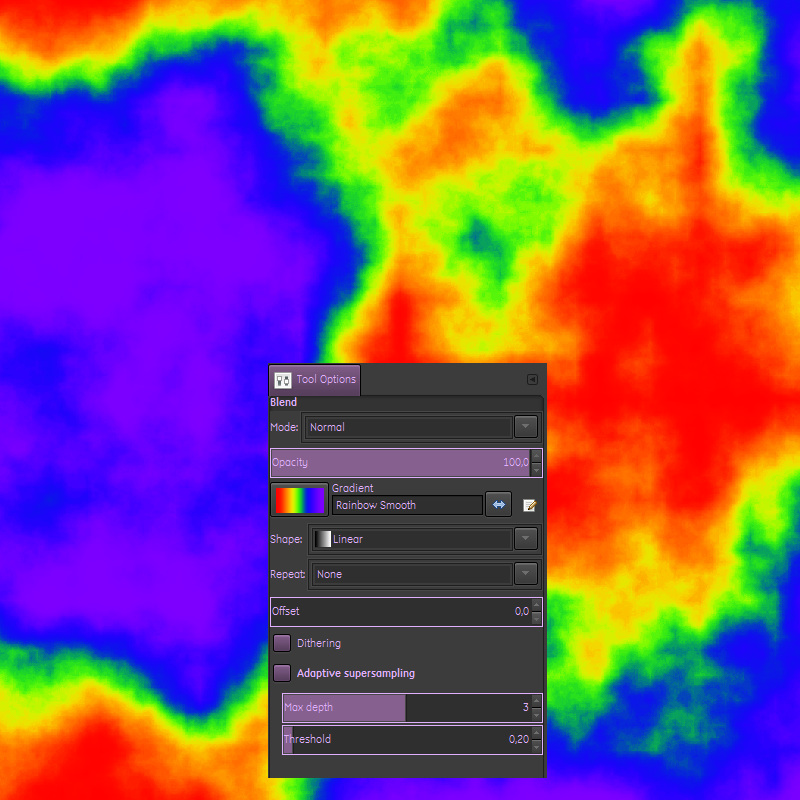
For such applications, it's better to use Soft light, Hard light, or some combination of Multiply, Addition, and/or Screen. The downside is that the effect may not be entirely natural-looking for all applications, especially if you want to create realistic lighting schemes.
Gimp gradient three colors full#
There are lots and lots of effects and adjustments that you can make with only Grain merge/extract and some math. 1 Answer Sorted by: 0 In your A1R5G5B5 bitmap, you only have 5 bits per channel, and so 32 values over the full range (in other words, a step of 1 over 5 bits is like a step of 8 in a regular 8bit/channel image). For example, making red 138, green 128, and blue 118 would modify the base layer so that red gets +10, green is unchanged, and blue gets -10. These two layer modes also work per color channel, so you can use Grain merge for linear color adjustments. three brown laces, Banner Gold, Golden ribbon, ribbon, golden Frame, text png. Go to the toolbar and set the background color (click on the rear of the two squares to bring up the color picker pane). Since Grain merge/extract uses addition/subtraction, the lightness of the base layer gets adjusted linearily, making it easily predictable, which makes it easy to figure out the correct values for your bevel/emboss/texture, etc. Layers Tutorial GIMP, degrade, ribbon, color Gradient, body Jewelry png. This is why it works so well for bevels and embosses. It converts the top layer to signed integers, but then substracts them from the image below.īasically, with Grain merge, any value above medium (>128) makes the result lighter, while any value below medium (<128) makes the result darker. Grain merge can basically be understood as converting the top layer's pixel values (0 to 255) into signed integers (-128 to 127), then adding them to the pixel values of the image below. As a bit of background, QGIS 2.2 introduced a gradient fill style for polygons.

They can be used for texturing, lighting, shading, beveling, embossing.

They're versatile and useful for many purposes - they're powerful, yet simple.

Grain merge and Grain extract are my favorite layer modes.


 0 kommentar(er)
0 kommentar(er)
